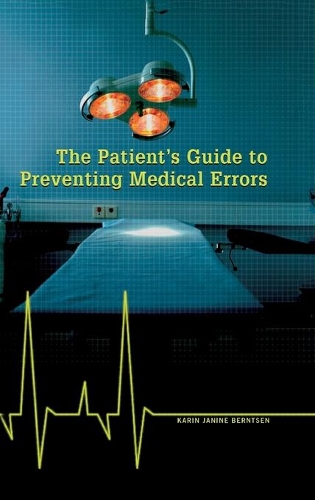
The Patient's Guide to Preventing Medical Errors
(Hardback)
Publishing Details
The Patient's Guide to Preventing Medical Errors
By (Author) Karin J. Berntsen
Bloomsbury Publishing PLC
Praeger Publishers Inc
1st October 2004
United States
Classifications
General
Non Fiction
610
Physical Properties
Hardback
288
Description
A nation watched in horror as 17-year-old Jessica Santillian died needlessly after a heart-lung transplant in 2003. She had been given organs with the wrong blood type. That error killed her. It is just one among tens of thousands of less publicized errors that occur in U.S. hospitals each year. Author Karin Berntsen, a veteran of the hospital and health care industry, takes us through the headlines, and the events never publicized, into hospital wards and surgical rooms to see how errors are made causing disability or death. She gives graphic examples of actual events that illustrate the problems cited in a federal Institute of Medicine report showing medical errors in the hospital cause 44,000 to 98,000 deaths each year. Those errors include medication mistakes, wrong site or side surgery, and botched transfusions. Berntsen explains why these are not just human errors with one or two people responsible; they are systems failures that require a major culture change to remedy. And that change, she argues, may not come without action by the very people the medical system is designed to help: patients. She offers clear actions consumers can take to assure they are not on the receiving end of a medical error. The book details over 200 tips for improving patient safety. U.S. hospitals have countless stories of miraculous healing and recovery; the greatest technology, most advanced medicines, and best research in the world. On the other hand, we have a system where medical errors bring more than 120 fatalities each day across the country in hospitals. An airline crash causing that many deaths daily would paralyze that industry. But because the deaths and harm are diluted across and deep within the silence of hospitals, it is easier to be complacent. There is, says Berntsen, an urgent need to pause and take inventory, a need for clinicians and consumers to come together as partners for change.
Reviews
"Caregivers, although this book is written for patients, it is an excellent source of information for your patient teaching modules and risk management programs. Your instructions to patients about preventing medical errors is critical to the success of your error reduction programs....[o]ffers clear actions consumers can take to assure they are not on the receiving end of a medical error."-Pam Pohly's Net Guide
Caregivers, although this book is written for patients, it is an excellent source of information for your patient teaching modules and risk management programs. Your instructions to patients about preventing medical errors is critical to the success of your error reduction programs....[o]ffers clear actions consumers can take to assure they are not on the receiving end of a medical error.-Pam Pohly's Net Guide
Well-selected case studies emphasize that consumers must be on guard, know what to expect, and be free to communicate, refuse, and delay an intervention when an error is suspected....Recommended. All levels.-Choice
"Well-selected case studies emphasize that consumers must be on guard, know what to expect, and be free to communicate, refuse, and delay an intervention when an error is suspected....Recommended. All levels."-Choice
Author Bio
KARIN JANINE BERNTSEN, RN is a health care executive, speaker and consultant in patient safety. She is President of Preventing Medical Errors (PME). PME is committed to forging partnership between health care professionals and the public in order to reduce medical errors. Her newly published book covers key issues that need to be established to impact the crisis of medical errors in U.S. Hospitals. Contact Ms. Berntsen at preventingmedicalerrors.com.
